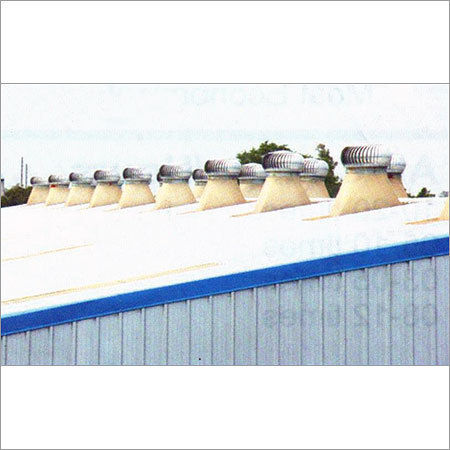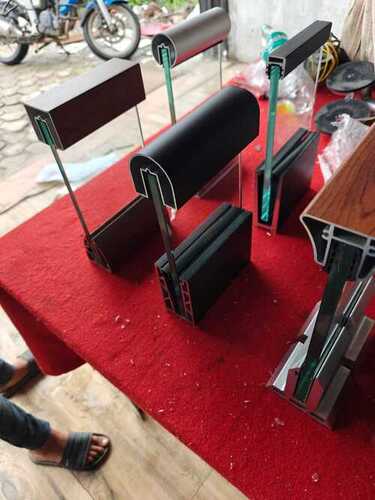Turbine Air Ventilators
Turbine Air Ventilators Specification
- Material
- Aluminum
- Type
- Industrial
- Voltage
- 220 Volt (v)
- Installation Type
- Central
- Usage
- Restaurant, Warehouses, Factory, Office
- Function
- Ventilation
Turbine Air Ventilators Trade Information
- Minimum Order Quantity
- 5 Pieces
- Payment Terms
- Cash in Advance (CID), Cheque, Cash Advance (CA)
- Supply Ability
- 1000 Pieces Per Month
- Delivery Time
- 1 Week
- Sample Available
- Yes
- Sample Policy
- Sample costs shipping and taxes has to be paid by the buyer
- Packaging Details
- Carton Box and Plastic Packing.
- Main Domestic Market
- All India
About Turbine Air Ventilators
Buildings can be naturally ventilated using turbine air ventilators, also referred to as turbine roof ventilators or whirlybird ventilators. They are made to bring in fresh air from the outside while also removing stale air, moisture, and odours from inside a structure. These ventilators work by generating airflow using wind energy.
Turbine air ventilators have the following important qualities and advantages:
1. Turbine ventilators use the force of the wind to generate a difference in pressure between the inside and outside of a building. The turbine rotates as the wind blows, providing a suction force that removes the stagnant air.
2. Turbine ventilators are energy efficient since they run on wind energy rather than electricity or gasoline. As a result, they are very ecologically friendly and highly energy-efficient because they lessen the need for mechanical ventilation systems that use electricity.
3. Natural Ventilation: By allowing air to travel without the aid of fans or blowers, turbine ventilators encourage natural ventilation. They contribute to the preservation of a comfortable and healthy indoor atmosphere by removing hot, muggy, or filthy air.
4. Moisture and odour control: These ventilators are good at taking out extra moisture from the air, which is especially useful in places where humidity levels are likely to be high. They also assist in odour removal by continuously circulating fresh outdoor air within.
5. Cost reductions: Over time, turbine ventilators can result in significant energy cost reductions by lowering the dependency on mechanical ventilation systems. They are an affordable ventilation solution because they need little upkeep and have a long lifespan.
6. Improved Air Quality: Turbine ventilators generate constant air movement that reduces the accumulation of pollutants such carbon dioxide, volatile organic compounds (VOCs), and airborne contaminants. This may lead to healthier living or working conditions and improved indoor air quality.
7. Durability and Weather Resistance: Turbine ventilators are often made of weather-resistant materials, such as stainless steel or aluminium, which offer resistance to corrosion. This guarantees their durability and dependability in all climates.
It's crucial to remember that the efficiency of turbine air ventilators might vary depending on the wind speed, the size and quantity of installed ventilators, and the structure's architecture and construction. The best number and location of turbine ventilators for a particular building or space can be determined by consulting with a ventilation specialist or engineer.
Features:
- Durability
- Rust resistance
- Robustness
- Smooth functionality
Specification
|
Material |
Aluminium |
|
Automatic Grade |
Automatic |
|
Height |
Upto 19 Inch |
|
Driven Type |
Electric |
|
Air Volume |
3000-8000 m3/h |
|
Speed |
4 m/s |
|
Brand |
SFC |


Price:
- 50
- 100
- 200
- 250
- 500
- 1000+
More Products in Ventilation Equipment Category
Roof Turbine Air Ventilator
Price 3500 INR / Piece
Minimum Order Quantity : 5 Pieces
Installation Type : Central
Type : Industrial
Usage : Restaurant, Office, Warehouses, Factory
Voltage : 220 Volt (v)
Turbo Roof Air Ventilator
Price 3500 INR
Minimum Order Quantity : 3 Pieces
Installation Type : Central
Type : Industrial
Usage : Restaurant, Office, Warehouses, Factory
Voltage : 220 Volt (v)
Air Ventilator
Price 3500 INR
Minimum Order Quantity : 3 Pieces
Installation Type : Central
Type : Industrial
Usage : Restaurant, Factory, Office, Warehouses
Voltage : 220 Volt (v)
Domal mini domal
Price 1200 INR / Piece
Minimum Order Quantity : 1 Piece
Installation Type : Window Mount
Type : Commercial
Usage : Commercial







